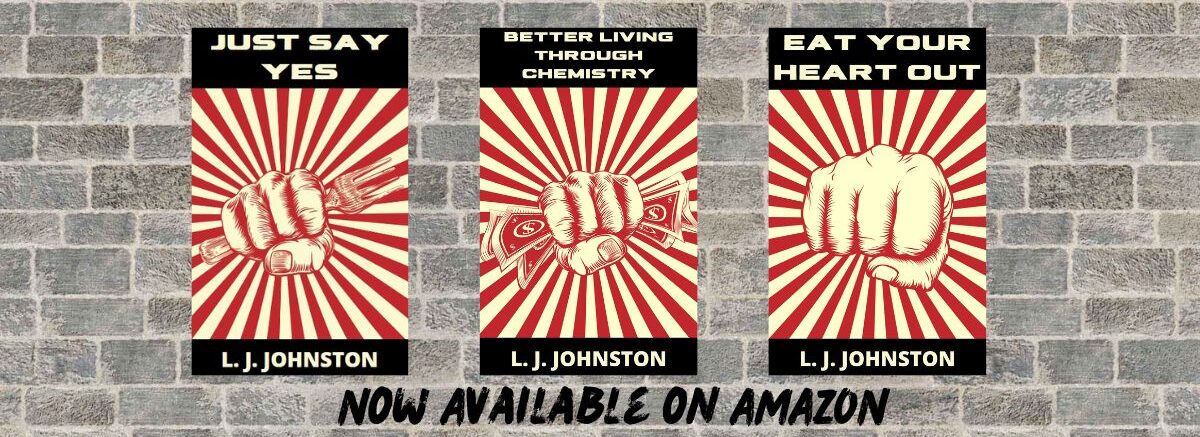Gizmodo has a great article on the history of a hugely popular, tasteless, odorless protein product that is rather nasty until it magically absorbs the other flavors in the recipe. No, we are not talking about tofu. It's the all-American dessert icon, Jell-O.
And of course I spent half the day down the gelatin rabbit hole. That's just my info addict self at work.
I'm not a huge fan of gelatin products. I'll eat it, if we've had an apocalyptic event and the atmosphere has turned toxic and I'm in a bunker and that's all there is left to eat. Otherwise, I consign it to the pile of foods I ate as a kid (Vienna sausages and baloney come to mind; and yes, I know it's 'bologna', but at our house, it was plain old baloney) before I knew any better.
Just reading about gelatin products are made was enough to make me a little queasy. It's hooves, people. Bones and hooves. Or any cartilaginous animal product, I suppose, that can be boiled down to its protein basics. I can appreciate the aspect of not letting anything go to waste. But now I kinda wish I didn't know what gelatin was made of.
Making gelatin was a real pain in the early days. Someone had to boil the bones/hooves all day long to extract the gelatinous goodies. Then they strained the liquid, let it set, skimmed the goo off the top, and the stuff underneath was the end product.
Initially, this stuff underneath was used an adhesive. You have to wonder about the thought process that ended up in, "Hey, let's eat some of this glue!" Probably the same process kindergarteners still repeat when they open their new school supplies.
Most sources point to the French as early adopters of gelatin as an edible. Initially the gel was a source of protein during times of scarcity. But somebody figured out since the stuff was odorless and tasteless, it could do with a little flavoring. And once some more palatable flavoring was in the mix, the popularity of the dish soared.

Initially the upgraded, tastier version of gelatin was considered a fancy-schmancy dish because it took so long to make and you had to be able to devote one or more of the kitchen staff to see to it. It wasn't until food industry wonks figured out how to shrink the days-long process to hours or even minutes that gelatin became popular with the masses. Not sure whether I consider that a blessing or a curse.
Couple more of my favorite takeaways from my time down the gelatin rabbit hole:
- Adding an 'O' to product names was a fad in the mid-1800s. Sort of like everything named iSomething now.
- Artist Norman Rockwell once drew an advertisement for Jell-O, showing a young girl serving the dessert to her doll.
- Jell-O turned to iconic comedians for their hugely successful ad campaigns.
- Early evidence of a gelatin product has been found in an Egyptian tomb, but it is thought to have been used as glue rather than dessert.
- Asian cultures developed a similar food product, but it was derived from sea weed.
- **Kitchen Gadget Hoarder Warning** If you really want to up your game, you'll acquire some Jell-O molds to give your gelatin dessert a fancy shape.
I sorta feel compelled to include a Jell-O recipe from my childhood. Don't hate.

https://www.allrecipes.com/recipe/14465/orange-gelatin-salad/
And now of course I have that old Jell-O jingle stuck in my head for the rest of the day. You're welcome.
Click-O-Rama
- So many food commercials during the Super Bowl. Which was the worst?
- Jane Friedman's compilation of recommendations of black teas from her readers
- Do you cook with arrowroot? I'm only familiar with cornstarch. May give it a try.
- This week I also learned that polenta is just another word for corn meal. We southern gals always have corn meal on hand. I tried it in this recipe. It was delicious!
- Last but not least on the ever-growing list of stuff I had no clue about, rice has arsenic in it? Perfect. Here's what to do about it from one of my favorite food dudes, Dr. Greger.
Thanks for reading! If you enjoyed reading this, I hope you'll take a minute to subscribe to my newsletter.
